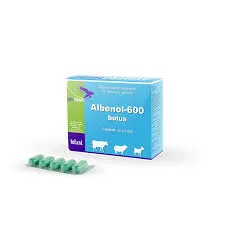- Afrikaans
- Albanian
- Amharic
- Arabic
- Armenian
- Azerbaijani
- Basque
- Belarusian
- Bengali
- Bosnian
- Bulgarian
- Catalan
- Cebuano
- Corsican
- Croatian
- Czech
- Danish
- Dutch
- English
- Esperanto
- Estonian
- Finnish
- French
- Frisian
- Galician
- Georgian
- German
- Greek
- Gujarati
- Haitian Creole
- hausa
- hawaiian
- Hebrew
- Hindi
- Miao
- Hungarian
- Icelandic
- igbo
- Indonesian
- irish
- Italian
- Japanese
- Javanese
- Kannada
- kazakh
- Khmer
- Rwandese
- Korean
- Kurdish
- Kyrgyz
- Lao
- Latin
- Latvian
- Lithuanian
- Luxembourgish
- Macedonian
- Malgashi
- Malay
- Malayalam
- Maltese
- Maori
- Marathi
- Mongolian
- Myanmar
- Nepali
- Norwegian
- Norwegian
- Occitan
- Pashto
- Persian
- Polish
- Portuguese
- Punjabi
- Romanian
- Russian
- Samoan
- Scottish Gaelic
- Serbian
- Sesotho
- Shona
- Sindhi
- Sinhala
- Slovak
- Slovenian
- Somali
- Spanish
- Sundanese
- Swahili
- Swedish
- Tagalog
- Tajik
- Tamil
- Tatar
- Telugu
- Thai
- Turkish
- Turkmen
- Ukrainian
- Urdu
- Uighur
- Uzbek
- Vietnamese
- Welsh
- Bantu
- Yiddish
- Yoruba
- Zulu
Nov . 26, 2024 17:53 Back to list
Veterinary Antifungal Medications for Treating Animal Infections and Conditions
Antifungal Veterinary Drugs A Comprehensive Overview
Fungal infections in animals can pose significant health risks, leading to severe morbidity and even mortality. As our understanding of veterinary medicine evolves, the need for effective antifungal drugs is becoming increasingly apparent. This article delves into the mechanisms, types, applications, and future directions of antifungal veterinary drugs.
Understanding Fungal Infections in Animals
Fungal infections can affect various animal species, including mammals, birds, and reptiles. Common fungal pathogens include Candida, Aspergillus, and Histoplasma. These infections can manifest in various forms, ranging from superficial skin infections to systemic illnesses that affect multiple organ systems. Factors such as climate, environment, and the animal's immune status play significant roles in the prevalence of fungal infections.
Mechanisms of Antifungal Drugs
Antifungal drugs work through various mechanisms to inhibit the growth of fungal pathogens. The primary targets of these drugs include
1. Cell Membrane Many antifungal agents disrupt the synthesis of ergosterol, a critical component of the fungal cell membrane. Azoles, such as fluconazole and itraconazole, act by inhibiting the enzyme lanosterol 14-alpha-demethylase, which is crucial in ergosterol biosynthesis, thus compromising the integrity of the cell membrane.
2. Cell Wall Echinocandins, such as caspofungin, target the synthesis of beta-1,3-glucan, a vital component of the fungal cell wall. The disruption of this structure causes cell lysis and death.
3. Nucleic Acid Synthesis Some antifungals, like fluoropyrimidines, impair nucleic acid synthesis, interfering with RNA and DNA synthesis and ultimately leading to fungal cell death.
Each class of antifungal drugs possesses unique properties, therapeutic indications, and side effect profiles, making them suitable for different clinical scenarios.
Types of Antifungal Veterinary Drugs
Antifungal drugs used in veterinary medicine can be categorized into several classes
antifungal veterinary drugs

- Azoles These are among the most commonly used antifungal drugs in veterinary medicine. They are effective against a wide range of fungal pathogens and are available in various formulations, including topical and systemic options. Practical considerations, such as long half-lives and excellent tissue penetration, contribute to their popularity.
- Polyenes Amphotericin B is a polyene antifungal known for its broad-spectrum efficacy. It is often reserved for severe systemic fungal infections due to its potential nephrotoxicity, requiring careful monitoring during treatment.
- Echinocandins While primarily used in human medicine, echinocandins are gaining recognition in veterinary practice, especially for treating invasive fungal infections.
- Allylamines These are primarily used for dermatophyte infections and act by inhibiting the squalene epoxidase, leading to the accumulation of squalene, which is toxic to fungal cells.
Applications in Veterinary Medicine
Antifungal veterinary drugs have a wide range of applications, including the treatment of dermatophyte infections, systemic mycoses, and opportunistic fungal infections in immunocompromised animals. Conditions like ringworm (caused by Trichophyton and Microsporum species) and fungal keratitis are common in pets and require targeted antifungal therapies.
In addition to therapeutic applications, antifungal agents are also utilized prophylactically in certain situations, such as in immunosuppressed patients or during surgical procedures to prevent potential infections.
Future Directions and Challenges
The emergence of antifungal resistance is a growing concern, mirroring trends seen in human health. Understanding the mechanisms of resistance and developing strategies to combat it is essential for the effective management of fungal infections in animals. Additionally, research into novel antifungal agents with enhanced efficacy and fewer side effects is underway. Furthermore, the integration of pharmacogenomics in veterinary medicine could lead to personalized treatment plans, optimizing the use of antifungal drugs based on individual patient profiles.
Conclusion
The role of antifungal veterinary drugs is crucial in ensuring the health and well-being of animals affected by fungal infections. As advancements in veterinary pharmacology continue to evolve, it is essential for veterinary professionals to stay abreast of the latest developments in antifungal therapies to provide the best care possible for their patients. With a comprehensive understanding of these agents, veterinarians can better combat the challenges posed by fungal infections and contribute to improved animal health outcomes.
-
Guide to Oxytetracycline Injection
NewsMar.27,2025
-
Guide to Colistin Sulphate
NewsMar.27,2025
-
Gentamicin Sulfate: Uses, Price, And Key Information
NewsMar.27,2025
-
Enrofloxacin Injection: Uses, Price, And Supplier Information
NewsMar.27,2025
-
Dexamethasone Sodium Phosphate Injection: Uses, Price, And Key Information
NewsMar.27,2025
-
Albendazole Tablet: Uses, Dosage, Cost, And Key Information
NewsMar.27,2025













